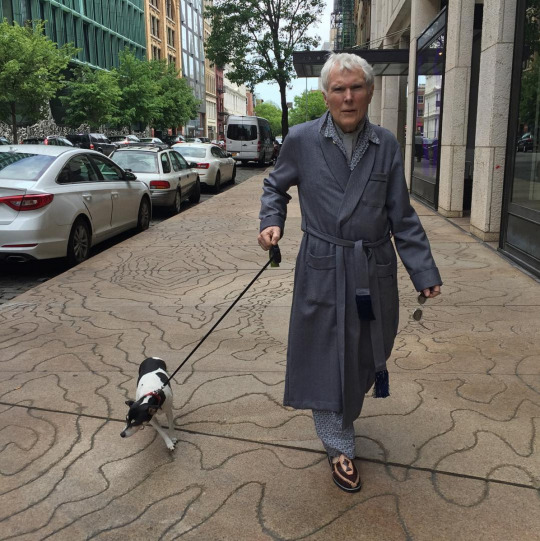
Fashion, at its core, is about fantasy. When Karl Lagerfeld sent models marching down the runway in 1964, he used painted screens and boxes, into which dresses neatly folded, to evoke the romance of 18th-century vignettes. Stories about craft and heritage menswear, similarly, make people dream of a better time — often an older time. In the foreword of A Style is Born, Graydon Carter vividly describes Anderson & Sheppard’s workrooms. “Walk down the hall to the long back room at Anderson & Sheppard, where Mr. Hitchcock cuts jackets and Mr. Malone cuts trousers, and you’ll see that the walls to your left and right are hung with tightly stacked rows of thick, worn, kraft-paper patterns […] The patterns are based on a series of specific measurements taken when a customer orders his first suit,” he opens. Somewhere in his description hides the dream that the reader, one day, can come here and order something.
The greatest fantasy, of course, is about self-actualization. We buy clothes to become better versions of ourselves. A well-tailored suit makes you distinguished, just as a rancher jacket makes you rugged. Whittle your wardrobe down with some contemporary minimalism, and you’ll magically channel Steve Jobs’ professional power.
These days, my fashion fantasy is much simpler: I want to take a nap. Not on the rolling hills of some bucolic English village or between tailoring appointments in Naples. But at my home in California. And not because I’m exhausted from partying all night, but because I’m legitimately tired from work. If I have any free time at all, I want to lay down. Because I’m an adult and want to rest. Seriously, please, let me rest.
Sometimes I think a brand could make so much money if they just showed models sleeping. I don’t want to be the jet-setting Italian playboy traveling between countries, or the rugged cowboy working on a Colorado ranch (honestly, both those activities sound exhausting). I just want to take a nap because I didn’t get enough sleep last night. On the upside, I’ve found that certain clothes allow me to shave minutes off my morning routine, which translates into more treasured bedtime. Here are ten items for people who fantasize not about wealth or influence, but deep, rejuvenating slumber.

JEANS
Jeans are the bedrock of a sleep-centric wardrobe. They’re the kind of thing you can throw on the floor and pick up the next morning without needing to clean or press your clothes. They look better with wear and go with nearly everything, including certain sport coats. You can also wear the same pair of jeans seven days a week without anyone batting an eye. For people short on time, these grab-and-go clothes are critical.
Over the years, I’ve cycled through at least a dozen models trying to find the Platonic ideal. The truth is the perfect pair of jeans doesn’t exist – a lot depends on what other clothes you like to wear. That said, one of my most worn pairs is 3sixteen’s slim-straight SL-100x. These are genuinely slim without being skinny, with a mid-low rise and slight taper that make them work across a range of casualwear styles. The jeans have become a favorite on denim boards because the fit flatters so many different types of builds.
I also really like COF Studio. Most skinny jeans fit way too tight and sit much too low – making them both figuratively and literally hard to pull off. COF Studio’s M1 and M2 cuts are skinny without fitting like Saint Laurent. And for things such as black leather jackets, you’ll want something like this instead of a fuller straight-leg.
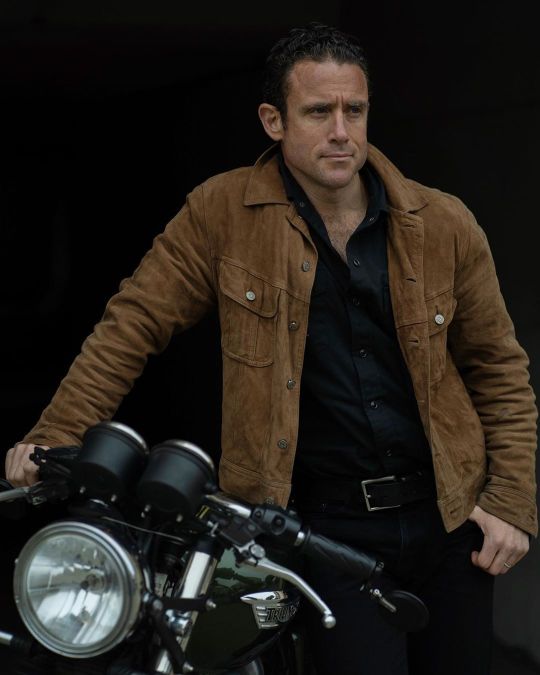
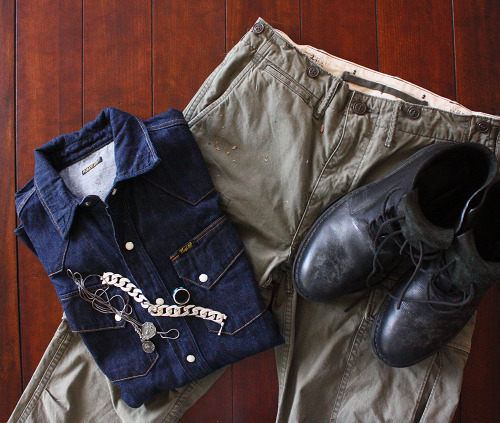
ALMOST ALL WORKWEAR
Similarly, workwear as a whole can be the sort of thing you threw on in the morning without any care or planning. These clothes are rugged, look better with age, and never need ironing. Workwear boots, such as Viberg’s very useful service boots, don’t require cleaning or polish. If clothes get stained, you don’t have to worry about laundering or, worse, bringing things to the dry cleaner. Who has time for that kind of stuff? I want to sleep, sleep, and sleep some more.
On days when I’m tired, which is often, I’ll wear a washed chambray shirt or plaid flannel, usually in blue or red for easier coordination. Darker denim Western shirts have also become a recent favorite, although mostly with black jeans or olive fatigues. For outerwear, I like olive military surplus jackets and anything tan (which, again, coordinates well with blue or black jeans). Pete from San Francisco can be seen above sporting a vintage Ralph Lauren trucker jacket. Tan suede truckers can be paired with anything short of matching tan suede pants (and even then, who knows, maybe if you’re daring). I recently bought one from Barbanera.
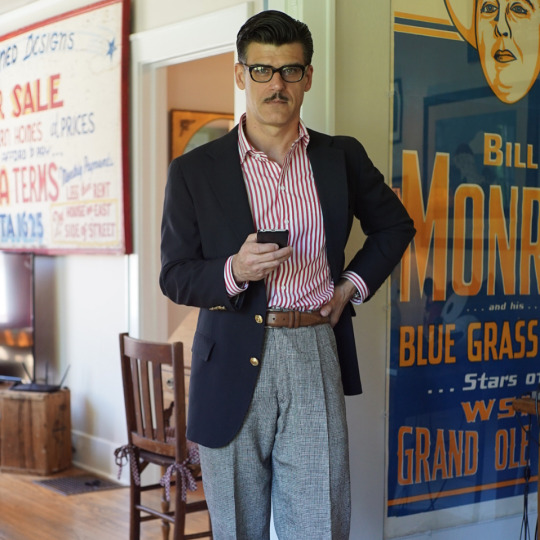
NAVY SPORT COAT
Tim Ferguson, a talented rootsy musician based in Portland, Oregon, posted a great story on Instagram years ago about the outfit you see above. When he turned 16, his mother brought him to the Polo Ralph Lauren store in Atlanta to get him his first set of “proper grown-up clothes.” She bought him a pair of grey linen houndstooth pants and, of course, a blue blazer. “I’ve lost track of some of the stuff over the years, and I’d often wondered what happened to the blazer,” he wrote on Instagram. “For some reason, it turned out my aunt had it, and when my mom was in Alabama recently, she picked it up for me.” Amazingly, the stuff still fits — he only had to take in the waist.
You don’t have to get a navy blazer, of course. Shiny brass buttons can beam like a lighthouse in today’s dressed-down world. But a navy sport coat with matte brown horn buttons is just about the least self-conscious style in tailored clothing. It’s easy to coordinate with shirts and pants, can be worn multiple times a week without anyone raising an eyebrow, and will clean you up well. Wear a navy sport coat for special dinners, formal occasions, and Mother’s Day. For ready to wear, you can check No Man Walks Alone (a sponsor on this site), The Armoury, Brooks Brothers, Spier & Mackay, and SuitSupply. If I want to wear a sport coat and don’t know which to choose, I almost always reach for my navy ones.
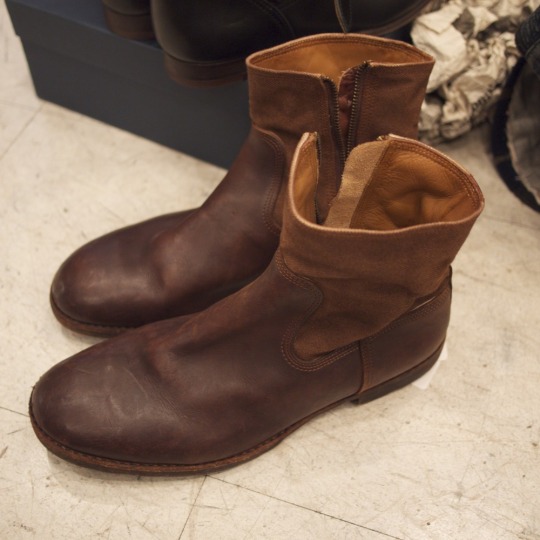
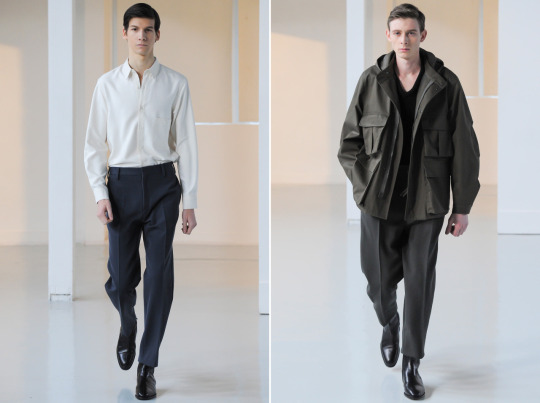
SIDE-ZIP BOOTS
I hate having zippers on my pants, but I love them on my shoes. My go-to casual shoes these days are side-zip boots, an ankle-height, plain toe style that features a zipper running up each of the medial sides. They straddle the line in terms of formality. Side-zips have clean, minimalist lines that make them feel a bit like Chelseas, but also front panels that make them reminiscent of roper boots. They’re more casual than derbies; more contemporary than chukkas; and more refined than work boots. I like them for their slight rockstar vibe, even if my life resembles anything but.
Side-zips go naturally with contemporary casualwear, such as slim jeans worn with topcoats. But the right pair, such as the Kapital’s naval boots, pictured above, can also be worn with French chore coats and military-styled jackets. Just pay attention to the toe shape and heel height. Margiela’s Campus boots have an elevated heel and chunky silhouette that evoke the daringness of 1970s style (I like those more with wide-legged pants). Best of all, like all sleep-friendly shoes, these are easy to slip on and off. Just a quick zipppppp and you’re done.
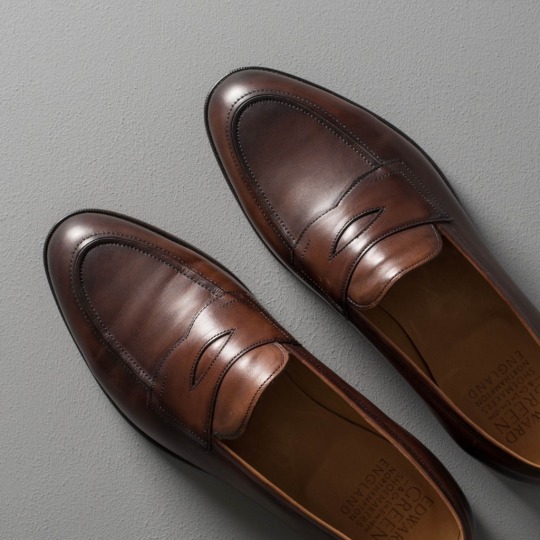
LOAFERS
Of all the slip-on styles, the penny loafer is the most unassailable. It was the sine qua non of the post-war Ivy Look. Often worn with Shetland sweaters, flat-front chinos, and tweed sport coats, they were the choice of Ivy League students across the East Coast, later finding broader appeal through Esquire. More than being an Ivy shoe, however, penny loafers embody the kind of casual, dressed-down style that the US has always championed (much like button-down collars). In fact, that’s what originally made them popular with students, who wanted something comfortable and smart, but sufficiently casual to avoid looking corporate.
You can wear penny loafers with anything that can be roughly described as classic. They go with navy sport coats with chinos, casual suits, button-down collars with jeans, or even just shorts and a t-shirt. Depending on where you live, they can work three seasons out of the year. They’re dressy enough for the office; casual enough for weekends. They ride the line between oxfords and sneakers. Like side-zips, they’re easy to slip on and off, which is a must if you, like me, want to spend more time sleeping than lacing.
The key to making them work is in the details. Sleeker loafers, such as Edward Green’s Piccadilly, are usually better with tailored trousers. Rounder, stouter loafers, such as JM Weston’s 180 and Alden’s Leisure Handsewns, can be more easily worn with jeans. Check companies such as Meermin, Lof & Tung, and Carmina if you’re looking for something on the more affordable side of the spectrum. I also like black tassel loafers these days, which go with dark worsted suits, navy sport coats with grey flannel trousers, and brown tweeds with tan whipcords. Brooks Brothers’ seemingly soon-to-be-discontinued model is on sale right now.

LOTS OF BLACK
In a New York Times article published last year, Jonathan Wolfe asked Valerie Steele, the director at The Museum at the FIT and author of The Black Dress, why New York City’s unofficial uniform is about wearing black from head to toe. “It’s only some New Yorkers who wear black, but it’s the kind of people popularly identified with this city – fashion people, artists, and hipsters,” Steele answered. “New Yorkers start to become associated with wearing black in the late 1970s and early ‘80s. That’s when you get a sort of perfect storm of different style tribes wearing the color.”
These included artists and cool downtown types, who wore black for its edgy and sinister power, as well as uptown office workers who sported the color for its practical applications. Black is slimming, work-appropriate, and easy to mix-and-match. “But one of the most important style tribes was the one associated with avant-garde art,” Steele said. “People were at first mostly horrified by it, but then very rapidly, people in New York started wearing these all-black, avant-garde Japanese fashions. It was like a secret Masonic handshake. Plus, New York City is a city of stone and black looks good in this environment. It wouldn’t look the same in a sunny Los Angeles milieu.”
I’ve come to like black clothes in almost all of its forms — black leather jackets, black skinny jeans, black boots, and most of all, black sweaters. Black not only hides dirt, but it’s also a neutral color that plays well with others. Scroll through enough runway photos and you’ll notice models often wear black tops because they help highlight outerwear. A black sweater is one of the most natural things to throw on underneath tan topcoats, blue trucker jackets, olive field jackets, and even matching black outerwear. On days I can’t be bothered to put myself together, I wear black jeans with black t-shirts, black leather jackets, and black boots. The contrast comes from the different textures and materials.
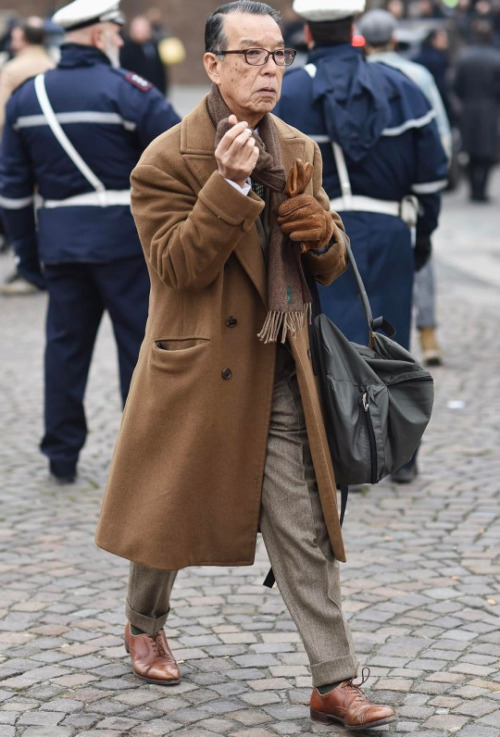
LONG TOPCOATS
In today’s dressed-down world, an overcoat can be an excellent way to get some of the benefits of tailored clothing without looking like you’re headed into the boardroom. They’re typically unstructured, so they don’t have the shoulder-defining look of a suit jacket, but they have face-framing revers and the general sensibility of tailoring. With a suit, a long overcoat can feel commanding and authoritative. With a chunky sweater and some jeans, they can add a touch of sophistication to an otherwise casual ensemble.
They’re also the kind of failsafe piece you can combine with anything – coordinated or clashing, smart or casual basics. It’s the thing you can wear to nice parties and special dinner outings, but also be a practical piece for running errands. It folds up well and can be a travel companion. It’s classic without being fusty; contemporary without being challenging. It’s about as close as anything can get to being universally useful. The Armoury, Cordings, Todd Snyder, Country Sports, Camoshita, Ralph Lauren, and O’Connell’s are pretty good for this sort of thing. I’ve also been eyeing this Melton topcoat from Sage de Cret. Long topcoats are the kind of thing you can throw on in the morning without worrying whether you look good – because you always will.

TEXTURED SWEATERS
Here’s the key to getting more sleep: wear knitwear. Knitwear doesn’t have to be ironed and can be layered over a wrinkly shirt. It hides everything but your shirt collar and makes you look presentable. Why does Bob look so great every morning? Because he saved ten minutes from not having to iron a woven shirt, which he then spent on getting more shut-eye.
I like sweaters that are either patterned or textured. There are a million options: lofty Shetlands, beautifully twisted cables, brightly colored Fair Isles, charmingly flecked Donegals, and brushed Shaggy Dogs. You can pair these with a Barbour jacket, field coat, leather bomber, chore coat, or parka. They look great sitting above a pair of grey flannels, five-pocket cords, or jeans. And much like how a solid-colored grenadine can be worn with almost anything, I find textured sweaters to be easier to wear than patterned ones (although, those are great too). Textured sweaters lend visual interest to plain colored jackets, but help tone down the look of more complicated designs.
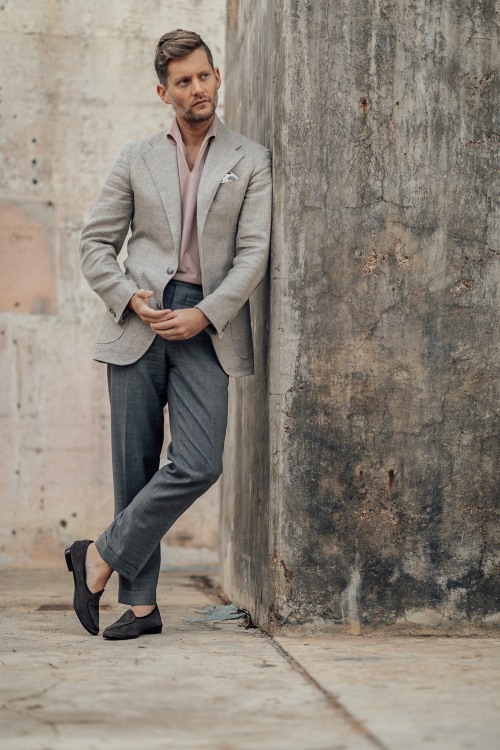
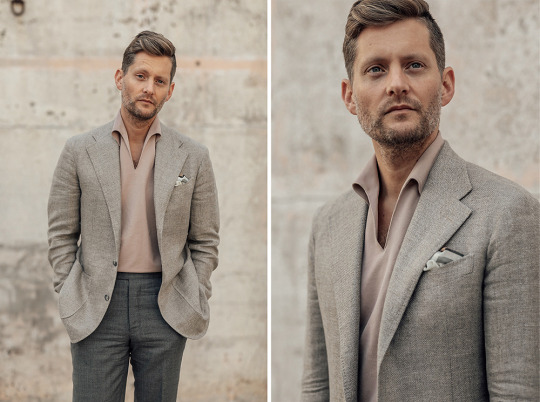
POLO SHIRTS
The lightweight polo is heavy with social meaning. Tucked into chinos and you’re a golfing uncle. Collar popped, and you’re the preppy antagonist in a bad 1980s film. Worn plainly on its own and you’re the sentient version of that sliced cantaloupe platter at every business conference.
Still, the style has its virtues. Like sweaters, its stretchy knit fabric is more forgiving than a woven button-up. On hot summer days, it can be tender mercy indeed. It requires little to no ironing, making it the perfect travel shirt or ideal for lazy Sunday mornings. And in an increasingly casual world, the soft, unstarched collar frames the face better than a crewneck t-shirt but is free the button-up’s stiff ceremony.
Polo shirts can be worn well, but it helps to avoid looking like a middle manager at a corporate retreat. Instead of the plain, piqué cotton varieties that litter every mall, try something with a deeper placket, more interesting collar, and some long sleeves. I particularly like them underneath casual sport coats, but the collar has to be able to stand up on its own, either with a one-piece collar or shirt-like collar band construction. The Armoury, G. Inglese, Lost Monarch, Kent Wang, Luca Avitable, Christian Kimber, and Anglo Italian are great for this sort of thing. I like and wear Berg & Berg’s Claes model, but recommend sizing up (I’m a 37″ chest and took a medium). In the photo above, Charlie from Canberra, Australia can be seen wearing a Zing Chen polo with an Eidos sport coat. “The collar is pretty floppy but the points are long, so the collar folds up nicely underneath a jacket’s lapels and stays there,” he says. In the US, Zing Chen’s polos can be bought through Taobao or by messaging them on Instagram.
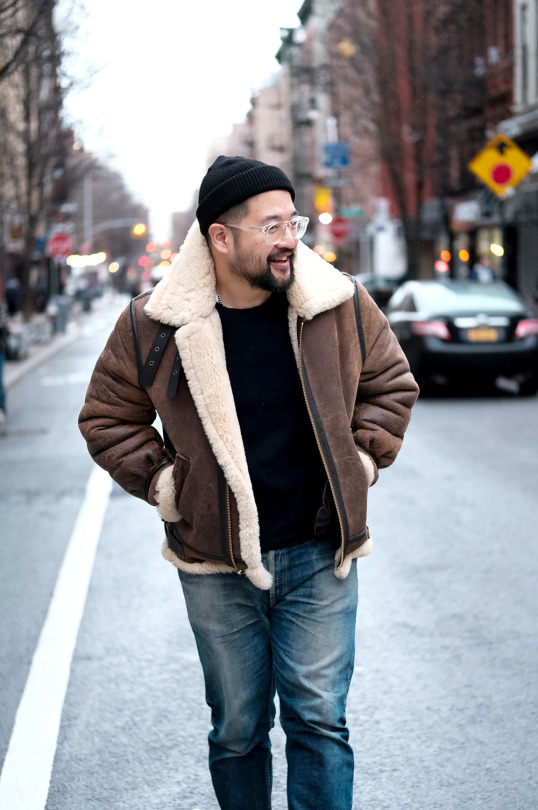
HATS, POSSIBLY A BEANIE
I can already hear what you’re saying: “I don’t think hats are for me.” To which I counter: are you a feudal baron, a Count, an Earl, or a sovereign prince? Do you have valets, chambermaids, and butlers? Do you have people who can do your daily chores, so that you can blissfully sleep in your mansion-sized room with a canopy bed and home bar? If so, then congrats, a hat may not be for you. But if you have to do your hair in the morning to look presentable, like me, then a hat can shave minutes from your morning routine. Which means more time on the couch, bed, or outdoor hammock.
I can’t promise you’ll look good in a hat (which is again, absolutely and totally secondary to sleeping). It takes a while to find a style that suits your face and style. If you’re worried about it, try a watch cap, which is one of the easier-to-wear styles. Andrew Chen, the co-founder of 3sixteen and a busy dad, says he likes Buzz Rickson’s. “You know how beanies get pilly? This one never gets pilly,” he says. Andrew is right. I’ve had mine for seven years, and it looks almost the same as the day I bought it. The style is a little pointed at the top and has a removable naval tag on the side. If you’re looking for a shallower or rounder designer, check Andersen-Andersen, Inis Meain, and most affordably Carhartt. For something you can wear with tailoring, I like Lock & Company’s rollable Rambler.
OK, that’s it from me today. I’m going to take a nap.
